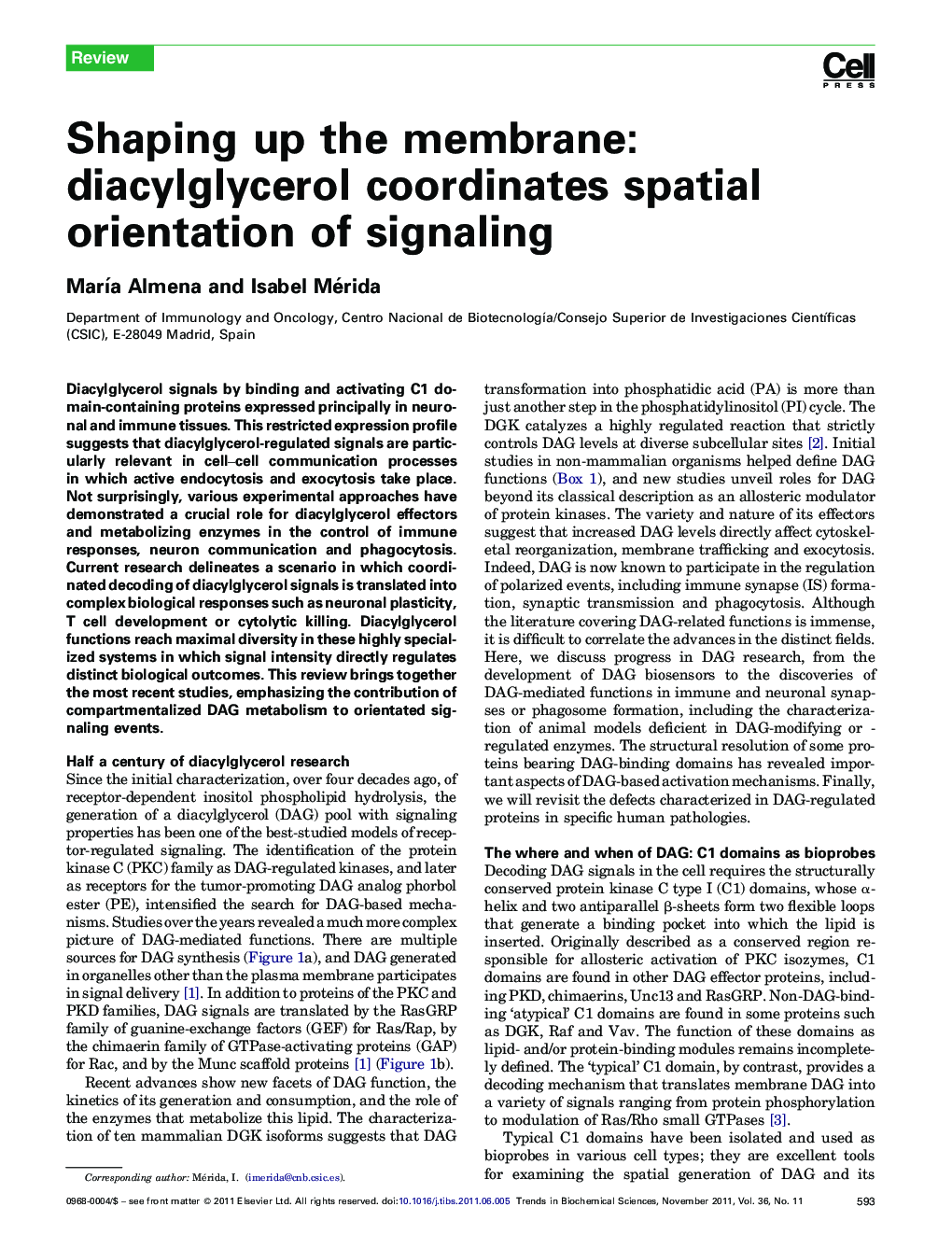| Article ID | Journal | Published Year | Pages | File Type |
|---|---|---|---|---|
| 2030894 | Trends in Biochemical Sciences | 2011 | 11 Pages |
Diacylglycerol signals by binding and activating C1 domain-containing proteins expressed principally in neuronal and immune tissues. This restricted expression profile suggests that diacylglycerol-regulated signals are particularly relevant in cell–cell communication processes in which active endocytosis and exocytosis take place. Not surprisingly, various experimental approaches have demonstrated a crucial role for diacylglycerol effectors and metabolizing enzymes in the control of immune responses, neuron communication and phagocytosis. Current research delineates a scenario in which coordinated decoding of diacylglycerol signals is translated into complex biological responses such as neuronal plasticity, T cell development or cytolytic killing. Diacylglycerol functions reach maximal diversity in these highly specialized systems in which signal intensity directly regulates distinct biological outcomes. This review brings together the most recent studies, emphasizing the contribution of compartmentalized DAG metabolism to orientated signaling events.
